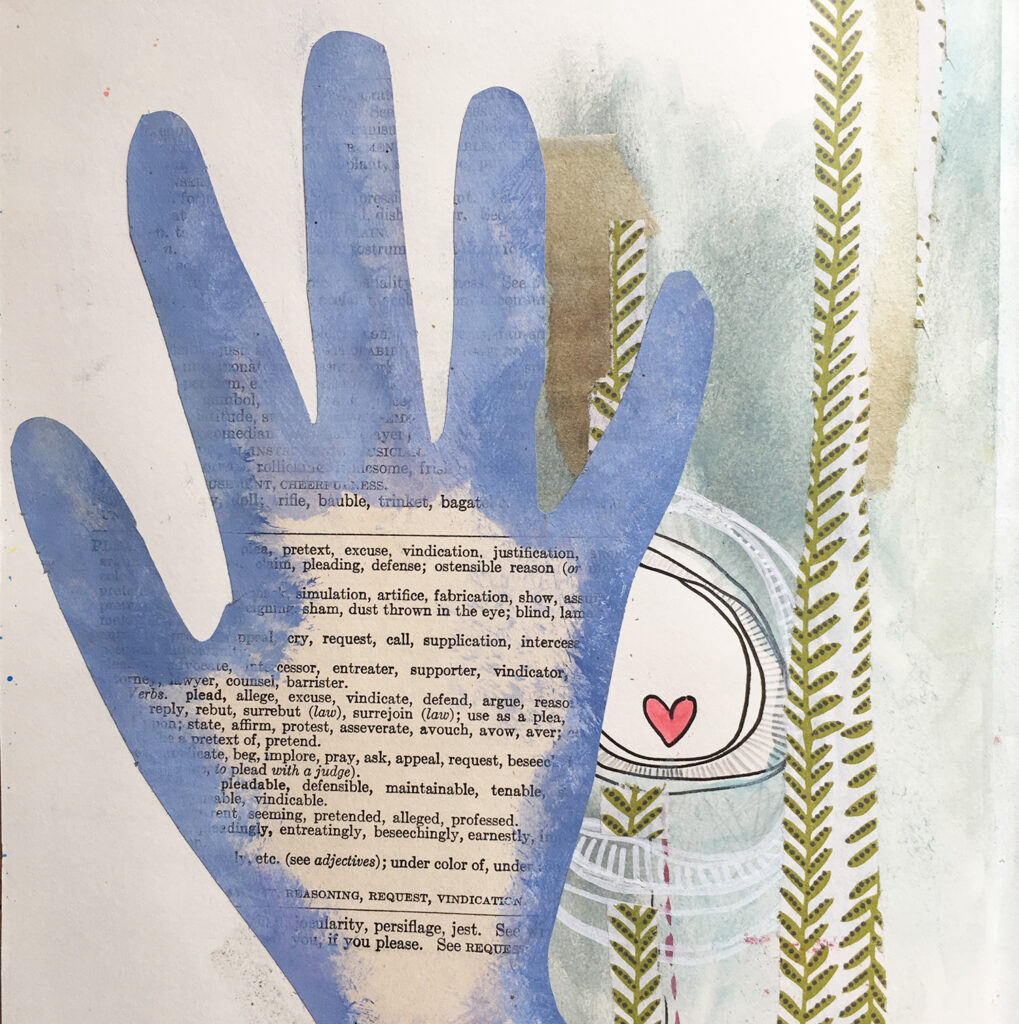Visual journaling, Art journaling, Sketchbook, Dream Diary, Vision Book— it doesn’t matter what you call it. What matters is that it is yours and that you engage. A visual journal is a physical space where you may enter into an intuitive process of making using images, words, lines, textures, shapes— whatever expression is true for you in a given moment. I have journals dedicated to explorations of beauty, color, and form. I have other journals to practice my a/r/tography and make research notes and memos. I have yet others for general doodling and drawing or for writing stories and poems. I even keep a birthday journal that I revisit annually. Together, our journals become a “graphic device to aid reflection on personal themes and metaphors” in one’s life journey (Grauer & Naths, 1998 in La Jevic and Springgay, 2008, p. 14). In this spirit, you might even call it visual journeying because you’ll likely end up in a different place than you were when you began. The main purpose of keeping a journal is the process. As Sara Scott Shields (2016) writes, “when an artist creates, it is often someone else who interprets, but through creative inquiry in the visual journal, the producer is also the perceiver— the one that throws the stone also watches the ripples” (p. 7). And there-in lies the power and possibility of the visual journal— a dynamic, generative movement between making and reflecting. Consider beginning this week with a drawing— with your images. Begin. Open.

Visual journaling is a dynamic, generative movement between making and reflecting.
To get started, you’ll need a journal. There are many journals to select from and they vary in size, style, cover material, binding, and more. Key considerations include: paper weight, paper size, and overall journal weight. Heavy paper weight is perhaps the single most important variable because a study journal page allows you to use thick mediums—like acrylic paints and gel medium— with limited impact on corresponding pages. For its affordability, I recommend the Canson XL Series, Mix Media Paper Pad, Side Wire Bound, 98 lb., sized either 7 X 10 inches or 5.5 X 8.5 inches. This particular pad may be purchased at Wal-Mart, Michaels, online, and other locations. However, the Canson Mix Media journal includes a large spiral binding and you may prefer a smooth spine. If so, an equal favorite of mine is the Strathmore Mixed Media Softcover Art Journal with 90 lb. paper. Although it is more expensive, the softcover and smooth internal spine provides a lightweight yet sturdy surface that accepts a wide range of mediums. Michaels also carries this journal, in addition to a number of online vendors.
In terms of your journaling supplies, you can use anything! Pencils, pens, markers, crayons, magazines, glue sticks, paint, printed documents or other fodder. Use what you have on hand. Use what a friend can lend you. Before you throw away household debris or waste, think: how can I create marks with this? Plastic forks, the bottom of egg cartons or seltzer cans, and even rocks can generate an array of captivating marks that can be used for printing and design.
As to how to begin— simply place pen to page! You might start by writing your “to do” list for the day, or simply inviting your mark to wander its way across the page. You might doodle, write, paste in pictures, photographs, or other physical fodder. You could compose songs or even cut up old journals to create a spread. If you find the blank page unexciting, then search your space for a book, magazine, or newspaper that you don’t mind ripping apart. Turn to a random page, tear it out, and begin there. You might draw over the words, circle words, blackout words, or just continue tearing the page and pasting down the pieces. However, you begin is how you are meant to begin and before you know it…. you’re off!
Citation: Redmond, T. (2020, September, 28). Visual Journeying and Other Modes of Transport. Retrieved from https://theresaredmond.com/visual-journaling/visual-journeying-and-other-modes-of-transport/
References
La Jevic, L., & Springgay, S. (2008). A/r/tography as an ethics of embodiment: Visual journals in preservice education. Qualitative inquiry, 14(1), 67-89.
Scott Shields, S. (2016). How I learned to swim: The visual journal as a companion to creative inquiry. International Journal of Education & the Arts, 17(8). Retrieved from http://www.ijea.org/v17n8/
